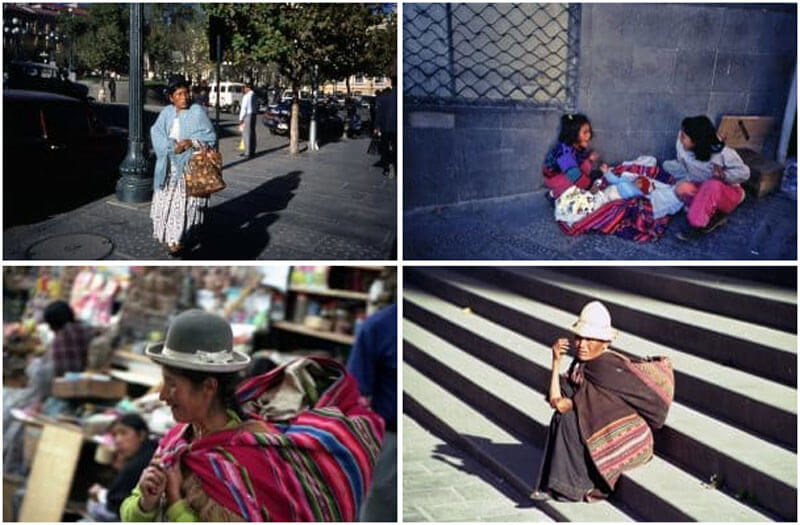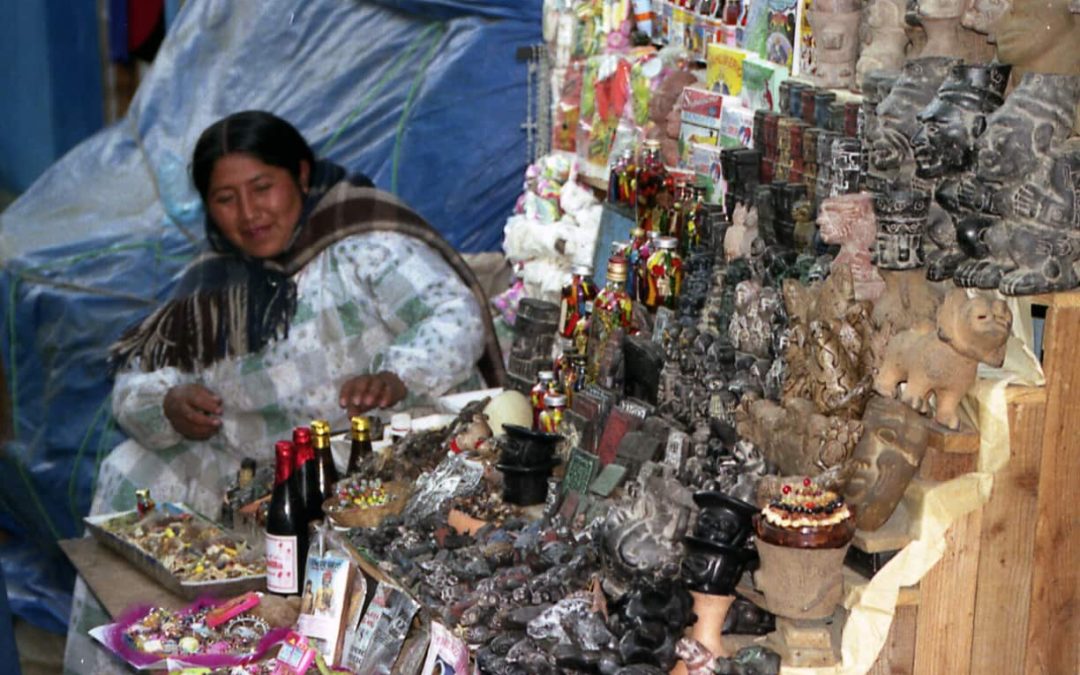Our beauty will pass… like winter in La Paz, Seweryn Krajweski sang many years ago. When I got to the capital city of Bolivia in November, when winter was gone – in the Southern Hemisphere summer was in full swing.
As early as at the airport some tourists turn pale and have difficulties with walking – you can see the only thing they’re dreaming of is a hotel bed. They got “puna” – the altitude sickness. La Paz is the highest situated capital city in the world – it lies at the height of nearly four thousand meters and especially those who come from lowlands have problems with breathing. The only and absolutely necessary cure is acclimatisation that lasts for a few days. Luckily, I came to Bolivia from Peru – my body knew the heights. I took a taxi to get to the hotel and observed the city spreading in a trough surrounded by mountains. It looks a bit like San Francisco, but the hills are occupied by the poorest districts, not villas of the rich. The height above the sea level is a clear sign of social status here. Districts located at lowest heights, in the centre, are most expensive – here breathing is a bit easier. Speaking of money, it’s worth mentioning that Bolivia is the poorest country of both Americas. It is even poorer than Haiti that is shattered with civil wars. It is located between Peru, Paraguay, Argentina, Brazil and Chile. It’s the only landlocked country of Southern America whose area is larger than the areas of France and Spain together. The country is also infamous in some other category – the government was changed here 188 times during a 157-year period. I wonder whether there is such a category in the Guinness Book of Records.
An amulet is an answer to everything
Mercado Negro – the witches’ marketplace is a unique attraction. You may buy “medicines” to all the disorders here: love or lack of love, unwanted pregnancy on lack of a baby, excessive rain and drought. Among the stalls you will find the elderly who are trying to find a remedy to illness and students trying to find a remedy to insufficient knowledge. You may find absolutely anything here: bunches of herbs, colourful cookies, frog figures, hairy llama embryos, stuffed rats, horrific dolls and secret potions. Some stalls are completely filled with aphrodisiacs of various types and supposedly various power. There are so many customers that it is difficult to squeeze through, and all that in the country where officially there are 95% of Catholics!!! I must admit I also bought some amulets: a figure of condor to get back home safely, incense to scare away evil spirits and pink candies to brighten up my mind. Equipped in all those things, I went to do some sightseeing of the Valley of the Moon located near the city. Erosion shaped its rocks into peculiar forms that really look like the landscape seen by the members of the Apollo missions. After return, I ramble around the streets of the city. You are lucky there are no demonstrations today – said Diana, an English girl I met on my way. It turned out that demonstrations were organised by miners working in silver mines, so it’s better not to walk around the streets of the city. Stones and police truncheons are basic political arguments. The Santa Cruz street is the axis of the city, where skyscrapers of hotels, banks and large companies reside. The artery ends on a square in front of the San Francisco church.
Young girls wear them at an angle
In the capital city of Bolivia I could observe the diversity and fanciness of headgears worn by women in Southern America. This really takes the biscuit. The traditions goes back to the times when Incas ruled – then the shape and the way people decorated their heads were the sign of the social status. In many regions of Bolivia, by looking at headgear, you may recognise the marital status of a woman. Most of Indian women wear elegant bowlers that look as if they were taken alive from the streets of the 19th-century London. English gentlemen stopped wearing them at that time, and a witty manufacturer, who was facing bankruptcy, exported bowlers to Bolivia and advertised then as headgear for women. They were a hit here. How can you tell the marital status of a woman, if all the bowlers are similar? Indian women found a way to show that, too. Married women wear them straight, and maidens – at an angle – a local trader explained it to me. It is amazing that Indian women buy hats that seem to be too big. Nevertheless, the hats always stick on the tops of their heads. It looks as if they were pinned or glued to their heads, although it’s not true. They don’t use any pins or rubber bands. It’s incredible that the hats don’t fell off when the bus shakes on horribly bumpy Bolivian roads. Also caps made of colourful yarns are beautiful. Handicrafts that are considered to be degrading to a true man in Poland, in the region of Titicaca lake are reserved exclusively for men.
A secret of lake Titicaca
I set off on a journey back to Peru. There are slightly more than a hundred kilometres to the border point located by lake Titicaca. The bumpy, gravel road, that instead of bridges has fords, is called a “fragment of the Pan-American highway”. I think the Bolivian minister of infrastructure must have been a really smart guy. There is yet another Bolivian tourist attraction on my way – Tiwanaku structures that are 15-km away from lake Titicaca. As many other sacred places on our planet, they are a mystery. Probably, before the Inca empire developed in Southern America, a civilisation of Aymara people had existed on the territory of the present day Bolivia and Peru. We don’t know a lot about it, as they didn’t know writing. Archaeologists found the country of Aymara people had existed for almost 2 thousand years and it was thriving around 700 CE. Then the structures of Tiwanaku were erected. The main complex prevails over a flat terrace, a couple of meters above the ground level. I admired the Apakana pyramid, that was astronomical observatory, according to some scientists, and the famous monolith Gate of the Sun, carved from a single block of granite that weight 10 tonnes. The first plan of the structures was made in 1912 by a Pole – professor Artur Poznański. The structures haven’t been explored fully until today. They say that the Bolivian government doesn’t want to issue a license for archaeological works to any foreign mission, but it doesn’t have the people and resources to do the works. It only adds some mystery to the place. Some people believe the city was built by an extraterrestrial civilisation, the one that created the giant Nazca lines.
Zofia Suska – a traveller and journalist, an author of TV reports “Podróże z Zofią Suską”.
Text and photos by Zofia Suska.


